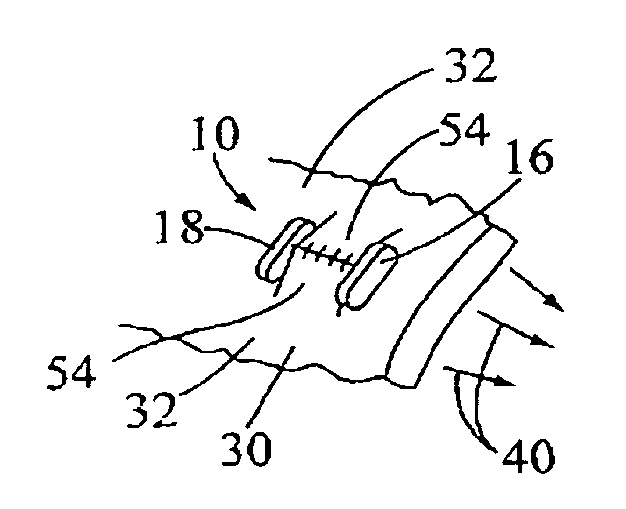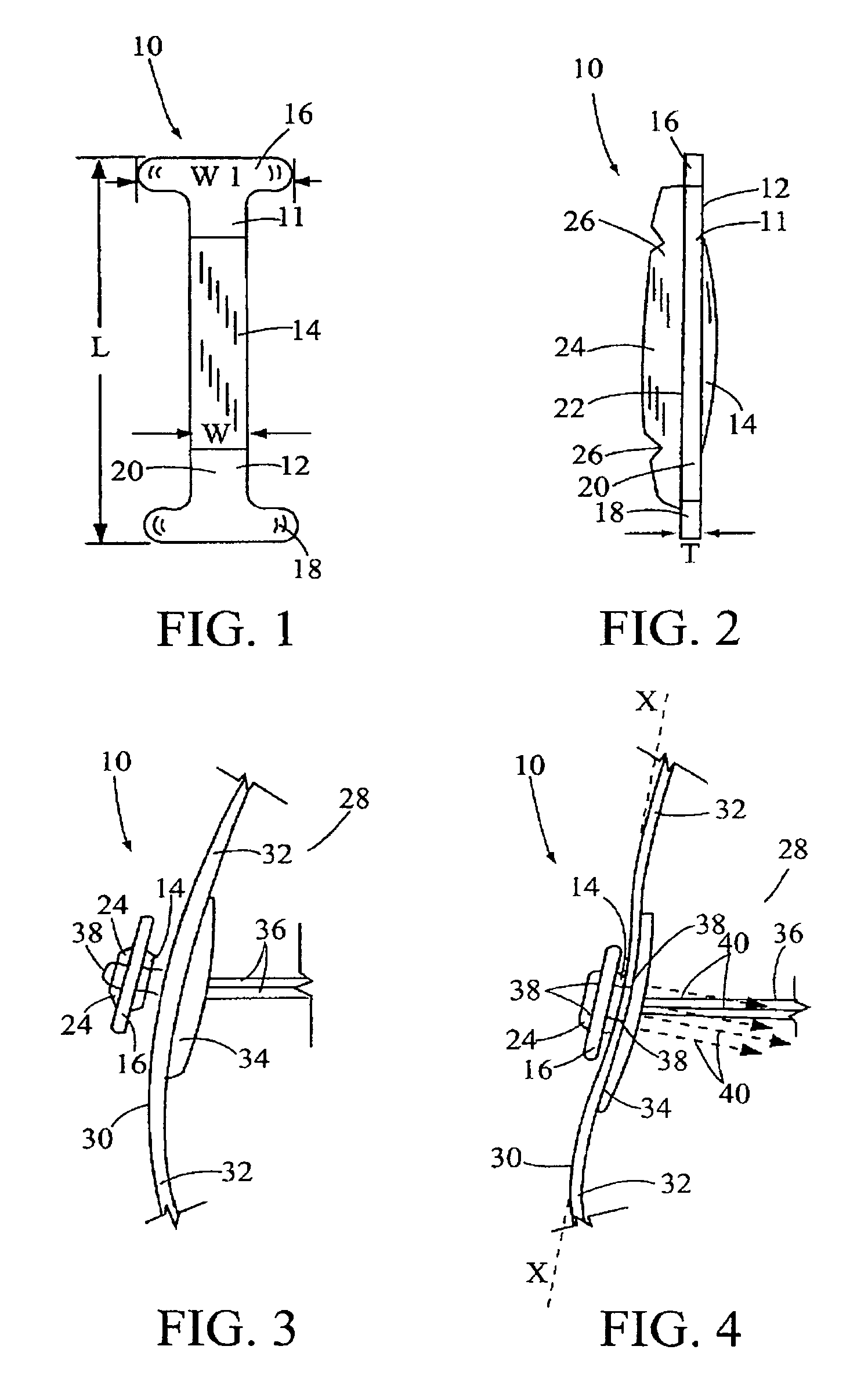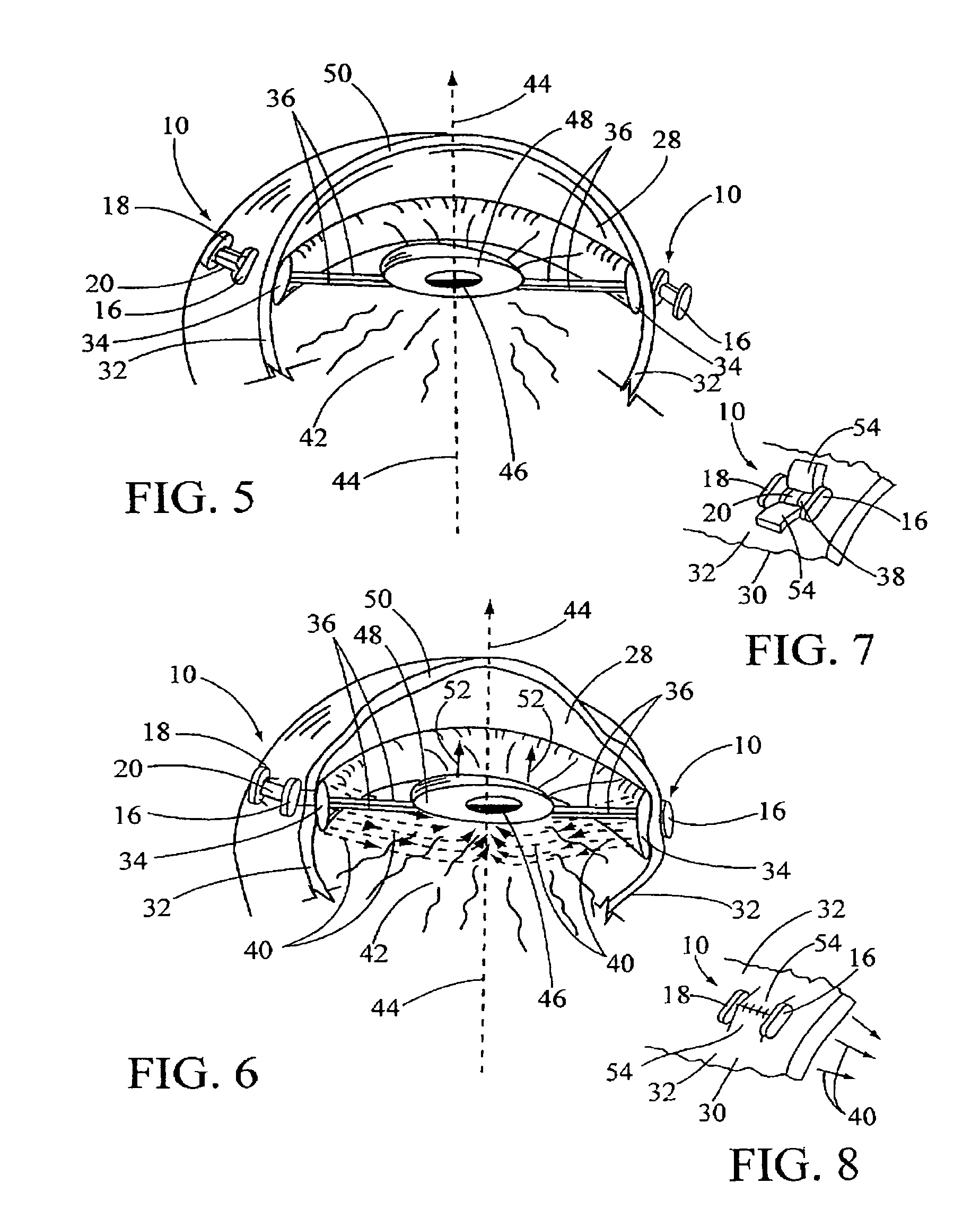Reading enhancement device for preventing and treating presbyopia of the eye
- Summary
- Abstract
- Description
- Claims
- Application Information
AI Technical Summary
Benefits of technology
Problems solved by technology
Method used
Image
Examples
Embodiment Construction
[0025]In FIG. 1, a front view of the enlarged subject reading enhancement device is shown having general reference numeral 10. The enhancement device 10 includes a compression body 11 with an “I-beam” configuration. A front 12 of the compression body 11 includes an outwardly extending semi-circular convex surface 14. A side profile of the convex surface 14 is shown in FIG. 2. The convex surface 14 is used for engaging, buckling and compressing both a portion of the sclera and the ciliary body of the eye. The compression body 11 also includes an enlarged, rounded first end portion 16, an enlarged, rounded second end portion 18 and an elongated center portion 20 with the convex surface 14 formed thereon.
[0026]The enhancement device 10 typically has a length “L” in a range of 3 to 6 mm, a width “W” of 0.5 to 2.0 mm, a width “W1” of 1.0 to 3.0 mm and a thickness “T”, shown in FIG. 2, of the center portion 20 of 0.3 to 1.0 mm. Obviously, these dimension will vary depending on the eye app...
PUM
 Login to View More
Login to View More Abstract
Description
Claims
Application Information
 Login to View More
Login to View More - R&D
- Intellectual Property
- Life Sciences
- Materials
- Tech Scout
- Unparalleled Data Quality
- Higher Quality Content
- 60% Fewer Hallucinations
Browse by: Latest US Patents, China's latest patents, Technical Efficacy Thesaurus, Application Domain, Technology Topic, Popular Technical Reports.
© 2025 PatSnap. All rights reserved.Legal|Privacy policy|Modern Slavery Act Transparency Statement|Sitemap|About US| Contact US: help@patsnap.com



